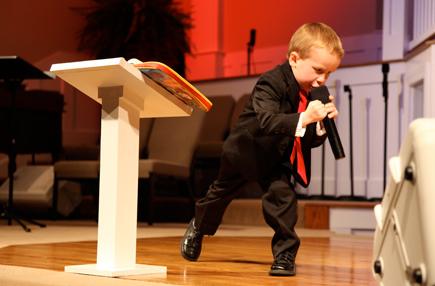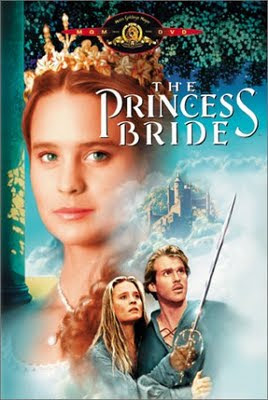Recovering The Sermon Part 4: Processes, Furniture, Remodeling
Welcome to Part 4 in the "Recovering The Sermon" blog posts--loosely based on a preaching workshop I facilitated recently for pastors, preachers and communicators.
In this post we get down to the nuts and bolts--the old nitty gritty--where the proverbial rubber meets the proverbial road. I can't think of any more cliches.
We're going to begin with antennae.
A few posts ago, I mentioned that when you are planning your sermons or talks several weeks or months in advance, you will find that you walk around with your antennae up, so to speak.
But I would argue that the great communicators always have their antennae up--they are always open to seeing God, truth, Jesus, hope, beauty in the world around them.
"Have your eyes open to the world, be alert to the things that are curious, that speak. If you find the world interesting, you will be interesting." - Rob Bell
Rob Bell famously uses a term called "buckets" to describe where he stores the ideas he accumulates. I first heard him speak about this many years ago at a Youth Specialties Conference in 2001, then again at the Poets Prophets and Preachers conference in 2008, then again in every single event of his I've attended.
He's been filling buckets for a long time. And he's still doing it, even though he no longer officially preaches to a congregation every week.
Rob told us a story once about a day when he was in Chicago near the beginning of Spring. There were some young guys throwing a bright green frisbee on a small piece of grass in the middle of downtown. The sun was out and it was barely warm, but there they were. Everyone was watching them with smiles on their faces--the kind of smiles that only people from the Midwest who have been enduring winter for like eight months smile. Suddenly the frisbee overshot the outstretched hands of one of the young men and sailed into a busy intersection. Everyone held their breath for a moment and then a cab came driving through and crushed the green frisbee into a hundred pieces.
Rob went to the intersection, gathered the pieces of frisbee and put them in an envelope. He said that was several years ago, and he still had the pieces in an envelope in his garage. One day, he told us, he would use them.
If your eyes are open--you will see plenty of things that will help you communicate better.
We walk around with smartphones that have state-of-the-art digital cameras built into them. There are so many things throughout the course of a week that we see, experience or witness that should strike us as curious or interesting. We can easily record these events via video or photo, and save them for a rainy day. It may not make sense to us in the moment--other than "That's cool!" or "I love that!" But one day---it might.
I use Evernote to organize my buckets. Evernote is like a huge filing cabinet in the cloud where you can file websites, photos, notes, documents, videos and just about everything else you can think of in notebooks that are searchable.
I literally have notebooks for every topic I can think of. Whenever I find something cool on the interwebs or I see something interesting that requires my capturing it by photo or video---I share it with my Evernote. About once a month I go through Evernote and organize all of the files.
I have learned that you never know when you will need something to bring a sermon or a talk together---and the best place to look is right in your buckets.
For example, I preached a sermon recently where I remembered a video I thought was amazing two years before. Sure enough, I found the link in an Evernote notebook and was able to use the video as an illustration for my sermon. It was literally the thing that drew the whole sermon together.
The Fast and Slow Thinking Process
Sermon preparation is a combination of "fast" and "slow" thinking. The fast thinking usually occurs on the front end of the sermonizing process. I typically start by reading through a stack of commentaries gleaned from my library. Rob Bell calls this knowing "the theological conversation." At some point I begin reading the same comments over and over again so I know I'ver sort reached my limit on commentary absorption. I do take extensive notes during this process, which I use later.
Then I leave the commentaries, my notes and go do other things. I even take a day off, typically after completing this little exercise. At this point you might go running, for a drive, surf, skate, play video games, anything that doesn't require a lot of thought. This will allow what you've just read to sink in a bit and for you to ruminate over the whole thing.
After this "fast" thinking, comes the "slow" part of the process. I often ponder the questions that I have about the passage. "Why does it matter?" or "Why do I find that curious?" I might even begin to wonder what is going on in the context of the passage. "Who wrote it? Why? Who was the audience? What was happening historically?"
Rob Bell suggested that you allow yourself to become "familiar with the emotional contours of the passage so that it sinks into your gut." This kind of slow thinking can only happen when you aren't doing the "fast" work of studying, cramming, taking all of the notes you can while reading.
The Controlling Idea
The days of sermons that are constructed of "three points and a poem," are long gone. People don't want a lecture. In their recent book, "Why No One Wants To Go To Church Anymore," Thom and Joanie Schultz identified that "getting lectured," was one of the reasons people didn't really care to come to church. Who would, right? And yet, that's what thousands upon thousands of preachers do each and every week: they prepare a lecture and deliver it to their congregation.
I have come to understand that when there is more than one point to my sermons, I've done something wrong. Andy Stanley refers to it as the "one thing," or the "big idea." Rob Bell calls it the "controlling idea." Either way it means the same thing. There's one point to the sermon.
Rob cited the example of one of the Nooma videos that he shot years ago about forgiveness. The controlling idea of the video was, "Forgiveness is when you set someone free and you realize it's you." The entire video was centered on this one idea--an idea that shaped the way the video moved, how it was shot and the story that was taking place behind Rob's teaching.
Last week I preached on having a home where everyone hungers and thirsts after righteousness--where the things of God are lifted up above all other things. The controlling idea of the sermon was: "In a Christ-centered home, righteousness is always on the menu." I try to keep the one point of my sermon concise and memorable. I also state it at the beginning of the sermon, perhaps throughout the middle and definitely at the end. I also include it on the sermon notes, it appears on the power point the congregation sees and I make sure to forward the one point to all of the worship leaders ahead of time so they know exactly what I am preaching.
Andy Stanley said something once that has shaped the way I construct the controlling ideas of my sermons ever since. He said, "You need to be able to tweet your sermon." Which means you need to be able to distill the essence of your sermon down to 140 characters or less. In case you were wondering, this is the most difficult part of the sermonizing process, but once it's done---you can really begin creating.
Writing, Arranging, Shaping
"Get every piece of furniture into the room, and then organize the furniture." - Rob Bell
Once you begin actually writing, or outlining your sermon, it's important to get all your ideas down--even if it doesn't all make sense in the beginning. Rob Bell told us that it was like getting all of the furniture into the room, and then working to organize the room so it looked good, had some feng shui or maybe had a rug that drew the whole thing together (for all you Big Lebowski fans).
One way to do this is by storyboarding your sermon. Here's a possible way to shape a sermon using storyboards:
Maybe you have a story--or a passage of Scripture that you want to begin with. So you draw a box and put a description of the story, or a synopsis of the Scripture in it.
Then you have a question about that story or Scripture that creates some tension. Maybe it's a question about "What kind of God would allow that...?" Or maybe it's one that begins something like, "Have you felt as though...?" The question creates a tension that perhaps didn't exist before the story or Scripture was read. So that question goes in a triangle next to the box.
After this you draw a circle, and you write a brief synopsis of an illustration or an example of how there is something in that question that speaks to all of us, there's a universal connection to it that we all sort of feel.
Then you return to your Scripture (or go to it for the first time) and bring the tension back--digging deeper into the context of the passage--and all of this goes in a triangle.
After this you draw another circle and you tell a story that illuminates why the thing we all feel is true, and the reason we feel it so deeply is because we were made to--or something like that. But at this point you are alleviating the tension that you caused with your questions, and your hints and allegations.
Then you draw another box and you outline a brief affirmation that is guaranteed to not only end your sermon but send the congregation out the door feeling as though they have been on a journey. They are wrung out, stunned, amazed, uncertain of how to even find the door.
This would be a good thing. Envision this.
Perhaps merely storyboarding the sermon will enable you to keep from having to write a manuscript. I'm of two minds on this because on the one hand I see the benefit of being able to speak "off the cuff" so to speak without feeling scripted, and on the other hand I think that it's important to put your ideas down at some point so you can go over them and evaluate whether they make sense or not.
I tend to do a bit of both. I storyboard and then use the storyboard to create a brief outline that is printed in the bulletins at my church. Then I write a blog post that serves as my manuscript. I do most of the sermon without it, but I do consult it from time to time if I want to get something complicated right. But I will say, I am trying to move away from even that little bit.
When I am preaching more practical sermons--sermons where I am challenging my congregation a bit---I often use a sermon shape that I learned from Andy Stanley's great book, Communicating for A Change. He typically uses a form that employs the following "movements:" Me, We, God, You, We.
When you use this pattern, you begin with a disarming story about yourself, perhaps. "When I was in seventh grade--I was the ugliest kid you could ever imagine..."
Then you move to include the audience, "We all know what it's like to feel awkward, and outcast, to be on the margins..."
Then you transition to your Scripture, "We're not the only ones to feel this way, as it turns out---thousands of years ago there was an outcast woman in ancient Palestine who met Jesus and had her life changed...."
After doing some exegesis, teaching from the text, telling the story, etc., you transition to the next part of the pattern by saying something like, "You may feel as though God is challenging you to change your life, to let go of your past---but all you want to do is talk about religion."
Then you move into the conclusion of the sermon where you paint a picture for "We" that moves the congregation into the future. "What would it look like if we simply trusted the One who knows everything there is to know about us, and accepts us anyway?"
Me, We, God, You, We.
Now, you might be thinking, "Doesn't that get boring to preach like that?" or "Doesn't your congregation get tired of experiencing the same patterns?" Not really. There are literally limitless variations that can be used within the Me-We-God-You-We pattern to keep it fresh and relevant---both for you and your congregation.
I also have a different pattern that I use when I am doing more of a study-style sermon where I am teaching through the text, letting it guide the shape of the sermon--and then conclude with some universal observations about the truth imbedded in the story, and a particular application for everyone to walk out the door with when we're done.
Regardless of the shape of the sermon, however, I always strive to have one controlling idea--even though I might have a couple of ways to reinforce it.
Next Installment: Creative Presentations & Idea Links







Comments
Post a Comment
Thanks for leaving a comment! If you comment Anonymously, your comment will summarily be deleted.